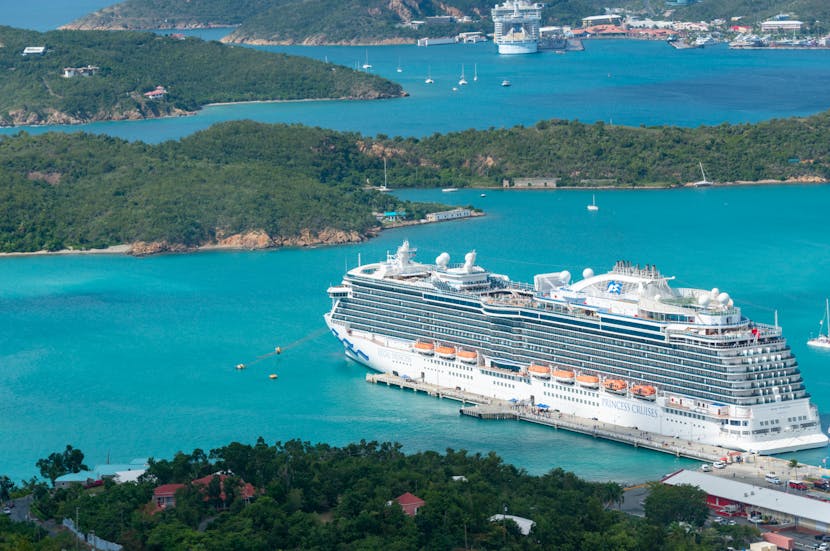- by foxnews
- 22 Nov 2024
Carnival, Royal Caribbean International, Norwegian, MSC, Princess , Celebrity Working to Boost Global Ocean Cruise Industry Through 2027
The global ocean cruise industry is experiencing a significant rebound following the devastating impact of the COVID-19 pandemic, with passenger numbers surpassing pre-pandemic levels in 2023. According to industry data, the number of ocean cruise passengers worldwide rose to 31.7 million in 2023, surpassing the previous peak of 29.7 million in 2019. This recovery reflects renewed consumer confidence in cruising, bolstered by enhanced health and safety measures, flexible booking policies, and pent-up demand for travel after two years of pandemic-induced restrictions.
- by travelandtourworld
- 27 Oct 2024
- in travel

The global ocean cruise industry is experiencing a significant rebound following the devastating impact of the COVID-19 pandemic, with passenger numbers surpassing pre-pandemic levels in 2023. According to industry data, the number of ocean cruise passengers worldwide rose to 31.7 million in 2023, surpassing the previous peak of 29.7 million in 2019. This recovery reflects renewed consumer confidence in cruising, bolstered by enhanced health and safety measures, flexible booking policies, and pent-up demand for travel after two years of pandemic-induced restrictions.
P&O Cruises, Cunard Line, and Azamara cater to more traditional and upscale cruising markets, focusing on elegant travel experiences. Seabourn Cruise Line, Regent Seven Seas Cruises, and Silversea Cruises are renowned for their ultra-luxury voyages, catering to affluent travelers seeking exclusive destinations and personalized services. Viking Ocean Cruises and Oceania Cruises emphasize cultural and immersive travel experiences, making them leaders in small-ship and destination-focused cruising.
Crystal Cruises, AIDA Cruises, and TUI Cruises, along with regional operators like Fred. Olsen Cruise Lines and Windstar Cruises, offer niche products that target specific customer segments. Hurtigruten, Ponant Cruises, Celestyal Cruises, and Marella Cruises are smaller but influential, providing unique itineraries and fostering market growth in regions like Scandinavia, Greece, and the Arctic. Together, these companies are driving innovation and helping boost the cruise industry's presence worldwide.
The data, spanning from 2009 to 2023, highlights the remarkable growth of the cruise industry before the pandemic, its sharp decline in 2020 and 2021, and its robust recovery in 2022 and 2023. Projections through 2027 indicate continued growth, with the number of passengers expected to reach 39.4 million by 2027.
Between 2009 and 2019, the cruise industry saw steady growth, driven by rising disposable income, expansion into new destinations, and the introduction of larger, more luxurious ships. In 2009, the industry served 17.8 million passengers, steadily climbing to 29.7 million passengers in 2019. This period of growth positioned the cruise industry as a dominant player in the global tourism market, offering an increasingly diverse array of itineraries and experiences that appealed to a broad range of travelers, from families to retirees.
The pandemic caused a dramatic decline in global cruise passenger numbers, as travel restrictions and health concerns led to the suspension of almost all cruise operations. In 2020, the number of passengers plummeted to 5.8 million, a stark contrast to the nearly 30 million passengers recorded the previous year. The situation worsened in 2021, with only 4.8 million passengers. The cruise industry faced numerous challenges during this period, including:
As vaccines became widely available and travel restrictions were gradually lifted, the cruise industry began its recovery in 2022, with 20.4 million passengers. The return of consumer confidence was driven by the implementation of rigorous health and safety measures on board, as well as flexible booking policies that allowed passengers to make plans without fear of losing their investment.
By 2023, the number of passengers surged to 31.7 million, exceeding pre-pandemic levels for the first time since the outbreak. This rapid recovery was fueled by:
The strong rebound in 2022 and 2023 showcases the resilience of the cruise industry, which has adapted to the post-pandemic landscape by prioritizing passenger safety and offering a variety of innovative travel experiences.
Looking ahead, the cruise industry is expected to continue its growth trajectory, with forecasts indicating that the number of global cruise passengers will rise steadily through 2027. The projected numbers are as follows:
These projections suggest that the industry will not only recover but also expand beyond its pre-pandemic peak, driven by several key factors:
The steady increase in cruise passengers from 2009 to 2019 reflects the global appeal of cruise vacations, driven by:
The sudden decline in 2020 and 2021 underscores the profound impact the COVID-19 pandemic had on the cruise industry. With ships docked indefinitely and international travel bans in place, the cruise industry faced unprecedented challenges, including financial losses and public perception issues due to virus outbreaks on ships.
The swift recovery in 2022 and 2023 signals the industry's resilience. As consumer confidence returns and demand for cruise travel grows, the industry is poised for continued expansion. Key strategies include the adoption of flexible booking policies, the introduction of enhanced safety measures, and the launch of innovative marketing campaigns.
- by foxnews
- descember 09, 2016
New travel trend has Americans chasing fountain of youth
Booking.com released its 2025 travel predictions list, and one trend, "passport to longevity," has 57% of travelers seeking vacations to "extend their lifespan."
read more




